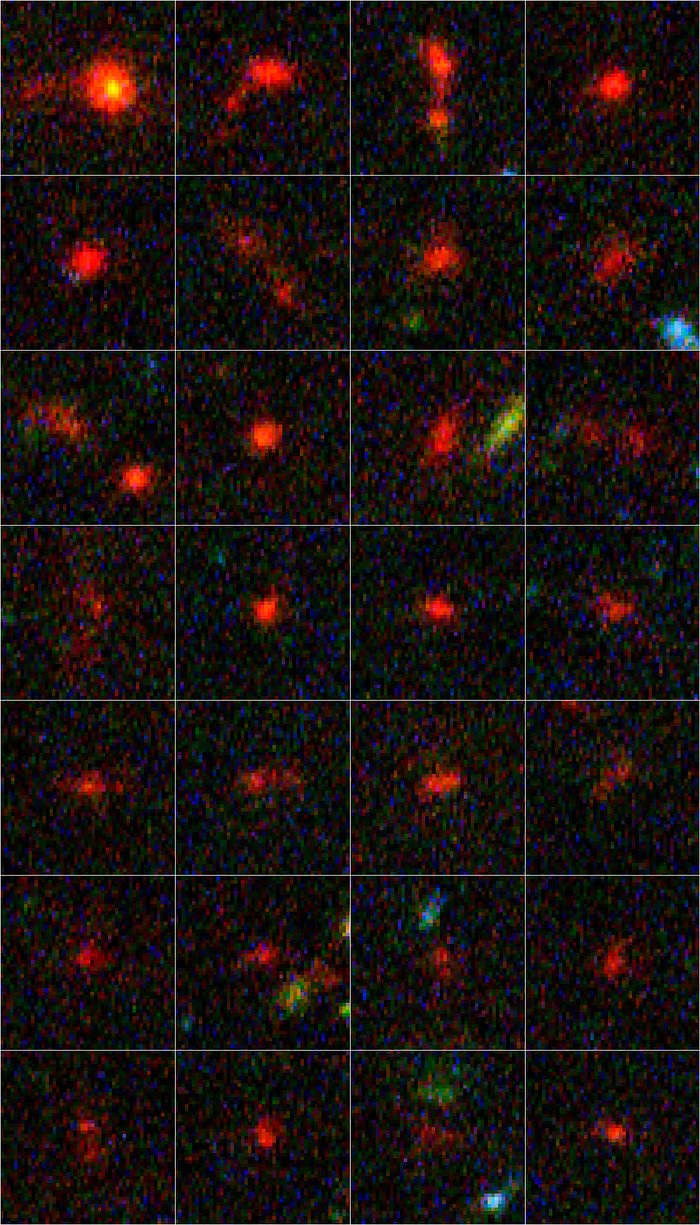Details of individual distant galaxies
Astronomers analyzing two of the deepest views of the cosmos made with the NASA/ESA Hubble Space Telescope have uncovered a gold mine of galaxies, more than 500 that existed less than a billion years after the Big Bang. These galaxies thrived when the cosmos was less than 7 percent of its present age of 13.7 billion years. This sample, of which 28 are seen here, represents the most comprehensive compilation of galaxies in the early Universe, researchers said.
The galaxies appear red because of their tremendous distance from Earth. The blue light from their young stars took nearly 13 billion years to arrive at Earth. During the journey, the blue light was shifted to red light due to the expansion of space.
Credit:About the Image
| Id: | heic0611c |
|---|---|
| Type: | Collage |
| Release date: | 21 September 2006, 16:00 |
| Related releases: | heic0611 |
| Size: | 1200 x 2100 px |
About the Object
| Name: | Hubble Ultra Deep Field, HUDF |
|---|---|
| Type: | Early Universe : Galaxy : Grouping : Cluster |
| Category: | Galaxies |
Colours & filters
| Band | Wavelength | Telescope |
|---|---|---|
| Optical B | 435 nm |
Hubble Space Telescope
ACS |
| Optical V | 606 nm |
Hubble Space Telescope
ACS |
| Infrared I | 775 nm |
Hubble Space Telescope
ACS |
